Sure, it’s not the calmest or safest country right now, and we’re not suggesting you hop on a plane tomorrow. But file this away for when things have settled in Syria. It’s also nice to remember that there’s beauty in a place where currently only bad news emerges.
Travel writer Margaret O’Connor writes: Let’s cut straight to the chase. Syria is one of the greatest value travel secrets in the world. Particularly if you are the sort of person so obsessed with history that you would turn down a date with George Clooney if it clashed with that SBS documentary about the Mongol invasions of Russia or the American Civil War that you have been looking forward to all week.
(Yes, I know that’s disturbing, and maybe these theoretical, hypothetical people — ahem — need the pleasure centres in their brains rewiring. But they are out there, trust me.)
Syria’s affordable, especially with the rise in strength of the Aussie dollar, populated with friendly and helpful types, and, with frequent and reliable bus services going everywhere, easy to traverse. Most of all, it is filled with amazing history, history, History, HISTORY, I tells ya. Layer upon layer of the fascinating stuff.
Neolithic. Epipaleolithic. Paleolithic. Bronze Age Iron Age Babylonian Persian Hellenistic Roman Byzantine Early Arab Crusader Late Arab Ottoman. The modern era, and the beams of sunlight penetrating the bullet holes in roof of the Damascene Souq Al-Hamidayya bazaar, souvenirs of the 1925 revolt, and the Hotel Baron in Aleppo, stuck in a delectable 1930s time warp….
Syria is blessed with some wicked Roman ruins. The pinky-gold desert city of Palmyra, located approximately two hours east of Damascus and half way to the Euphrates, is a monument to one of history’s most enigmatic and fascinating figures, Queen Zenobia of the Palmyrene Empire. Zenobia and her army rebelled against the Roman Empire in the third century AD, invading Egypt, Anatolia, Lebanon and Palestine. (Go, girl. The rebellion very nearly got up, too, before it was crushed by Emperor Aurelian.)
Apamea in Syria’s west, a fortress originally built by the Seleucid kings, is downright amazing, especially on a misty day. Visit Syria in January or February, when it’s off peak, rug up a bit, and you’ll be able to wander around these places in virtual solitude.
And these are the better known Syrian tourist attractions.
Hire a car and a driver in Hama (between Damascus and Aleppo) and in one day you’ll be able to see not only Apamea, Krak de Chevalier (other tourists can actually be spotted here) but also lesser known historical delights such as Qalaat Shaizar. This castle merits a write up in Ross Burns’ Monuments of Syria but I’ll bet that no-one reading this has heard of the place, which was a stronghold of Arab resistance during the Crusades. I hadn’t, until our driver suggested we include it in our itinerary.
An hour later and I was gobsmacked, my eyes were out on stilts, and I was ruminating on all the Australians I knew who would just love Qalaat Shaizar and aren’t preserved ruins so much more preferable than restored ones…..’cos aren’t they just so evocative…..there’s nothing like rambling all over your very own silent deserted ruined castle to bring out your excited Inner Child, with a starring role in the Famous Five books — didn’t they have their very own island with a ruined castle on it?
Then there’s Musyaf, the Assassin’s Castle. Oh, the thrill of being able to visit the hideaway lair of my all time favourite historical cult. The Assassins’ Cult, a secret society of trained killers founded by the legendary ‘Old Man of the Mountain’, Hasan-i Sabbah, was an order of Nizari Ismailis (a branch of Shia Islam) in existence from around 1092 to 1265. Sabbah apparently used hashish (possibly the origin of the word ‘assassin’) and vivid descriptions of paradise to induce the cult members to commit numerous strategic assassinations of prominent Crusaders, and make a near-successful attempt on the life of Saladin.
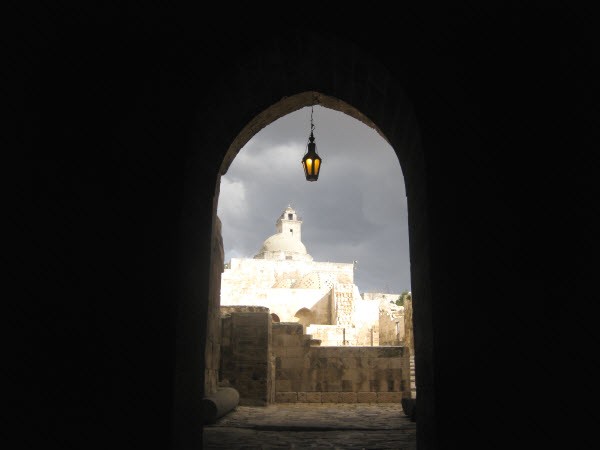
And the Old Cities of Damascus and Aleppo, the two largest Syrian cities, both amongst the most ancient cities in the whole history of the world?
They filled the head of this public servant with mad wild dreams of throwing it all away, buying one of those adorable Middle Eastern Ottoman era houses and transforming it into a bed and breakfast.
(The cure, by the way, for this time wasting and distracting affliction is to be given A House in Fez by Suzanna Clarke for Christmas. This book describes the challenges of renovating a house in Fez, Morocco, owned by Clarke and her partner, Sandy McCutcheon. Cured me pretty quick, I can tell you.)
The Australian “we keep returning to Syria ’cause it’s full of amazing things to see and one trip doesn’t do it justice” community I’m familiar with is divided into two camps — those who prefer the merits of either the Aleppo or Damascus Old Cities over the other. Oh, the rancorous dinner party arguments this issue has generated.
Although I love the Aleppo Old City to bits and pieces, I marginally prefer that of Damascus. It’s divided into fascinating little ‘quarters’, and unlike that of Aleppo, there are plenty of restaurants and cafes scattered throughout, providing opportunities for a hopelessly lost traveller to plonk her weary bones down and sample the Damascene version of a cappuccino. (Hint. Think lots of sweetened condensed milk.)
If anyone wants to dispute this, it’s fine. It’s just that I’m besotted with Damascus’ Old City because it was the very first Middle Eastern souq of its type I had ever experienced, and it stole my heart away. Completely.
The clincher is that it is mentioned in the most ancient of texts. Sorry, George, my dance card is full.
You can find more of Margaret’s writings at her blog.


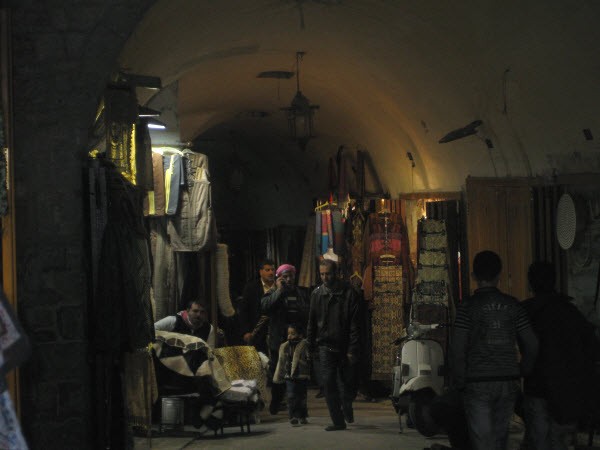
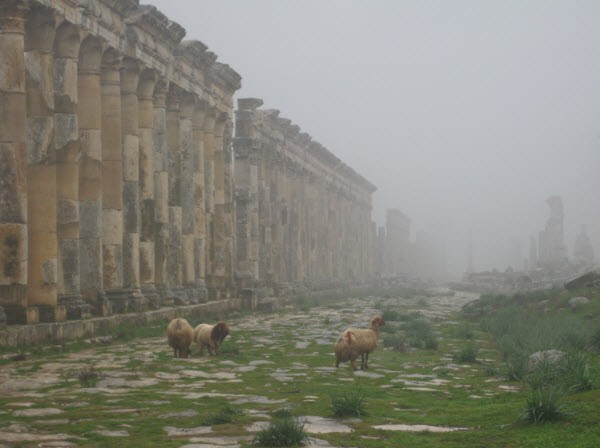
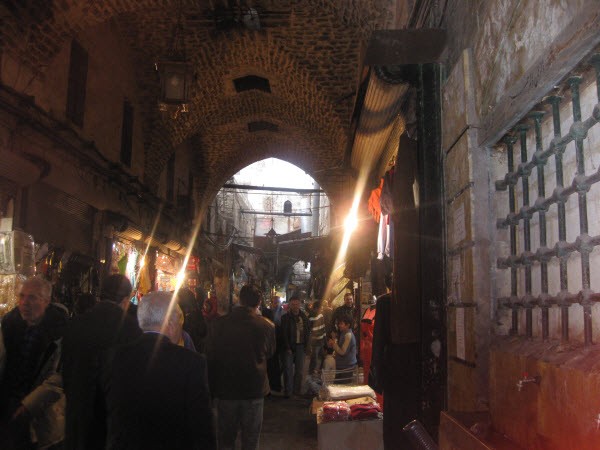
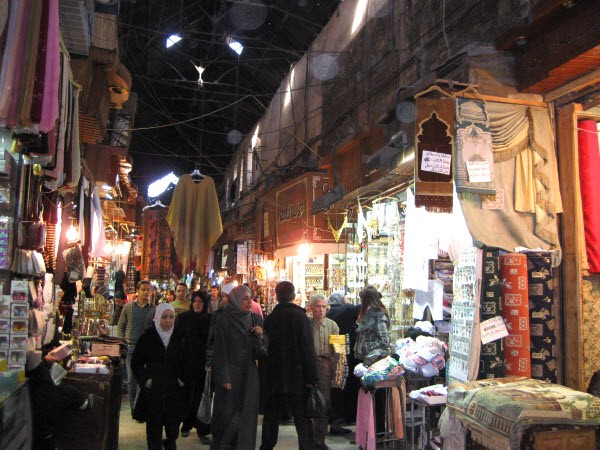






Crikey is committed to hosting lively discussions. Help us keep the conversation useful, interesting and welcoming. We aim to publish comments quickly in the interest of promoting robust conversation, but we’re a small team and we deploy filters to protect against legal risk. Occasionally your comment may be held up while we review, but we’re working as fast as we can to keep the conversation rolling.
The Crikey comment section is members-only content. Please subscribe to leave a comment.
The Crikey comment section is members-only content. Please login to leave a comment.